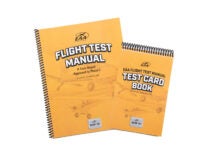 The Federal Aviation Administration (FAA), along with the Experimental Aircraft Association (EAA), and the United States Ultralight Association (USUA), are concerned and committed to improving the safety record of amateur-built and ultralight aircraft. Past FAA Administrator, T. Allen McArtor, and past EAA President, Paul H. Poberezny, signed a Memorandum of Agreement (MOA) on August 1, 1988, addressing the need for educational and safety programs to help amateur builders test fly their aircraft. This AC (90-89A) lists guidelines for flight testing amateur-built aircraft, using suggestions in the MOA.
The Federal Aviation Administration (FAA), along with the Experimental Aircraft Association (EAA), and the United States Ultralight Association (USUA), are concerned and committed to improving the safety record of amateur-built and ultralight aircraft. Past FAA Administrator, T. Allen McArtor, and past EAA President, Paul H. Poberezny, signed a Memorandum of Agreement (MOA) on August 1, 1988, addressing the need for educational and safety programs to help amateur builders test fly their aircraft. This AC (90-89A) lists guidelines for flight testing amateur-built aircraft, using suggestions in the MOA.
The revised AC includes flight testing recommendations for canard type and ultralight aircraft as part of the continuing efforts to improve the safety record of all types of general aviation aircraft. In 2012 the first Loss of Control Working Group (LOCWG) investigated the causal factors behind fatal accidents arising from a loss of control (LOC) during the approach and landing phases of flight. Loss of Control is the leading cause of fatal accidents in general aviation. From study of a random sample of 90 fatal accidents fitting this profile over the past decade the Working Group recommended 27 safety enhancements (SE), 23 of which were approved. SE-23 is implemented into this AC.
As a result of SE-23, there are two major additions to this AC.
- The Type Club Coalition (TCC) coordinated by the EAA developed a best practices guide for when flight tests should be done following a modification to an amateur-built aircraft.
- Testing for center-of-gravity (CG) limits, including lateral, was added to this Advisory Circular.
In addition, two informational FAA updates were added.
- Light Sport Aircraft (LSA) flight testing after a modification is mentioned where appropriate within this AC.
- All references to two seat ultralights have been removed.
Readers can download the revised AC at this link:
www.faa.gov/regulations_poli…mentID/1027429












